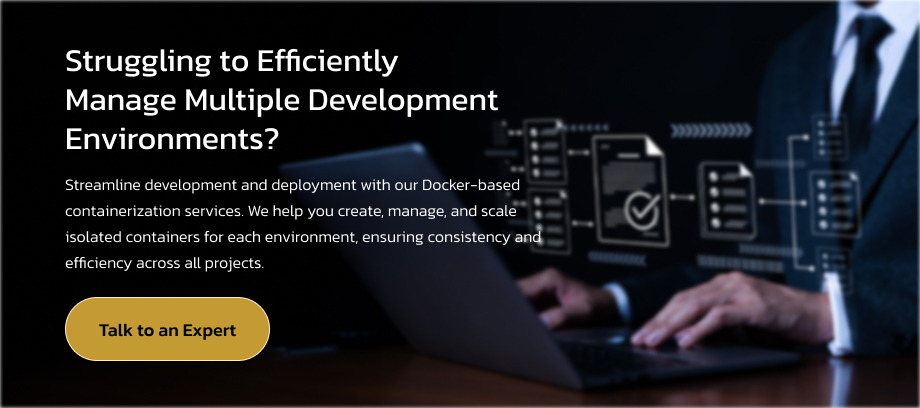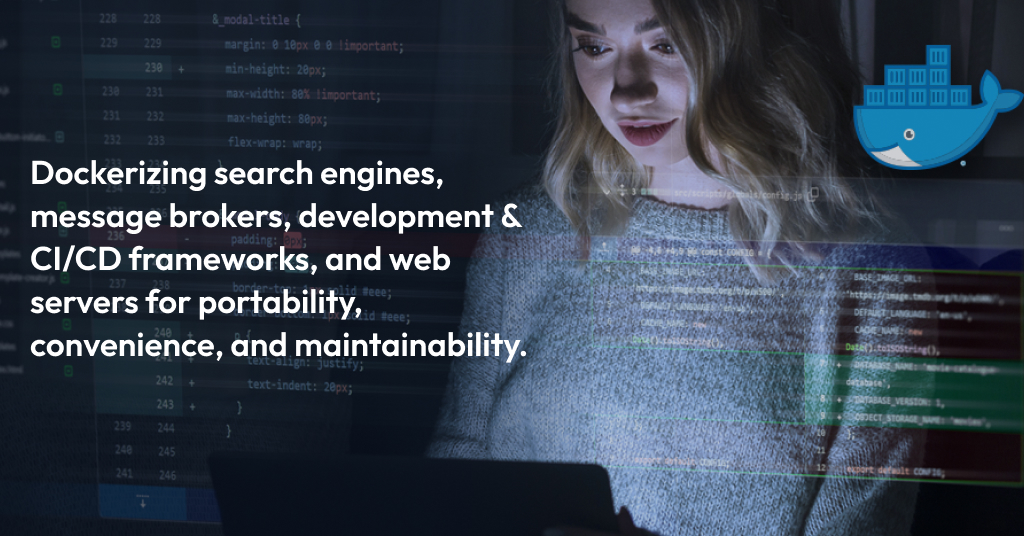
As per Statista, the container management market is projected to grow from USD 465.8 million in 2020 to approximately a billion USD in 2024. This rapid growth highlights the increasing importance of containerization in modern software development. Today, this market is dominated by leading platforms, Docker and Kubernetes, each playing a crucial role in how organizations deploy, scale, and manage applications.
In this blog, we’ll focus on Docker, exploring its significance and providing expert insights on some of the most widely used Docker containers. From enhancing development workflows to optimizing deployment processes, these containers are redefining the way we approach software infrastructure.
What are the Benefits of Utilizing Docker Containers?
Dockerizing various search engines, message brokers, development & CI/CD frameworks, and web servers offers a myriad of benefits, including:
- Consistency across environments: Docker containers ensure that applications run in the same environment regardless of where they are deployed, eliminating the “works on my machine” issue.
- Adequate isolation: Dockerized engines, servers, and brokers work in isolated environments for each service or application. This reduces the risk of conflicts between dependencies.
- Portability: Docker containers encapsulate applications with all dependencies and configurations. These containers are easily portable across different environments and platforms.
- Rapid deployment: Docker containers enable quick application setup and deployment, reducing the time required to bring new features and services to market.
- Version control and rollback: Dockerizing simplifies version control and rollback processes, allowing for easy updates. As they maintain version histories, you can also revert to a previous version.
Top Docker Containers for Efficient, Consistent, and Secure Software Development
Search Engines
Dockerizing search engines (Elasticsearch and Solr) enables efficient scaling, simplified configuration management, and easy integration with other containerized services like databases and web servers.
1. Apache Solr
Solr is an open-source search server built on Apache Lucene, an information retrieval library. Designed for scalability and fault tolerance, it is an enterprise-grade server that is perfect for handling rigorous demands.
Key Features:
- Advanced text analysis, stemming, and filtering
- Dynamic categorization of search results via faceted searches
- Near-instant updates to search indexes
- Scalable across multiple servers for load balancing and reducing redundancy
- Highly customizable schemas and search configurations
- Supports diverse formats like XML, JSON, CSV, and binary
Architecture:
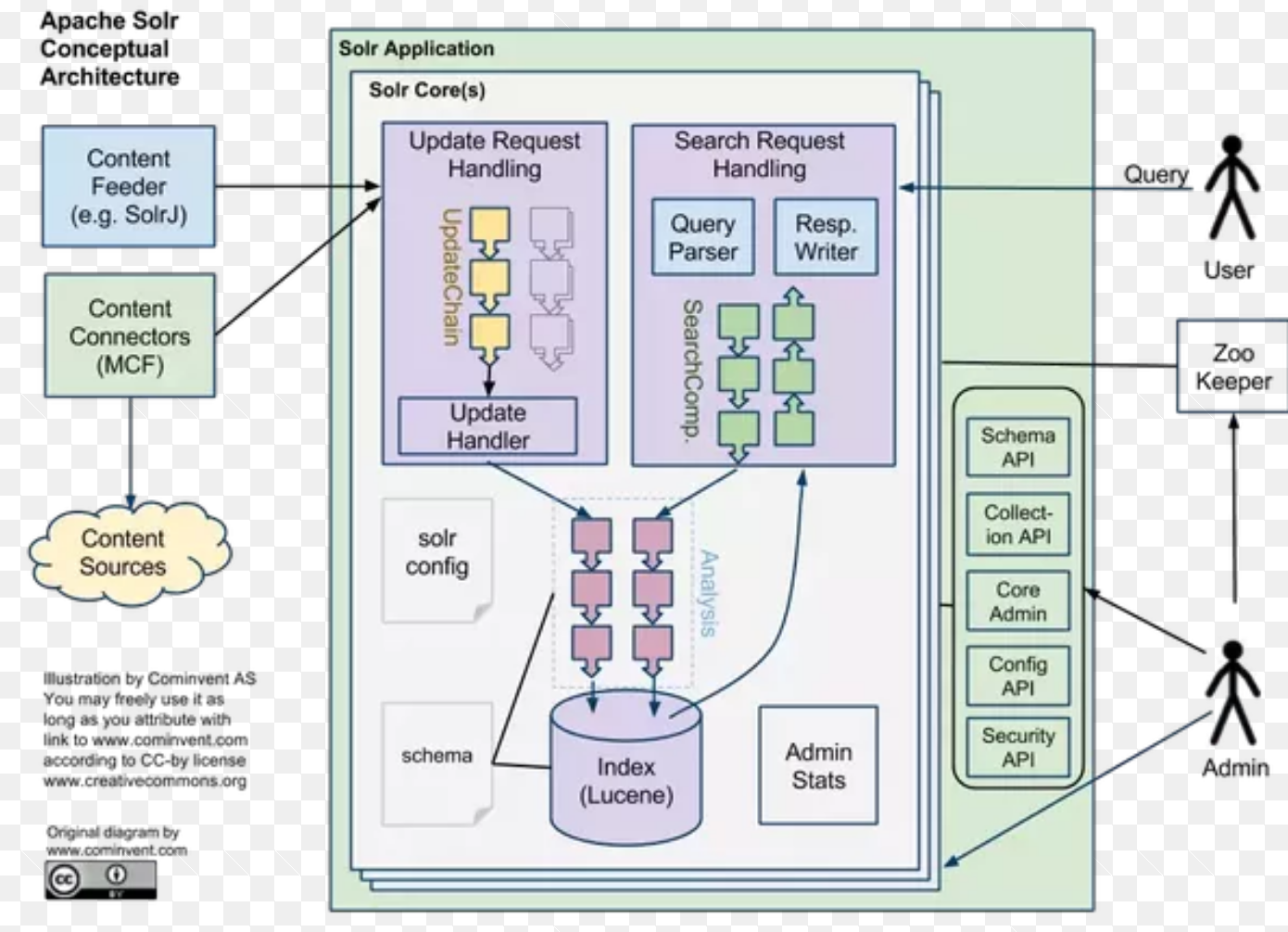
Use Cases:
- Enhancing product search and filtering in eCommerce websites
- Implementing document indexing and retrieval systems for large organizations
- Improving search capabilities in content management systems
2. Elasticsearch
Elasticsearch is a distributed, open-source RESTful search and analytics engine built on the Apache Lucene library. It is known for its ability to handle real-time data and provide fast search responses, making it ideal for applications requiring robust search capabilities and analytics.
Key Features:
- Real-time search and analytics
- Advanced full-text search with complex querying and scoring
- Horizontal scalability and high availability
- Simple and powerful RESTful API
- Seamless integration with the Elastic Stack (ELK)
- JSON document storage for flexible data handling
Architecture:
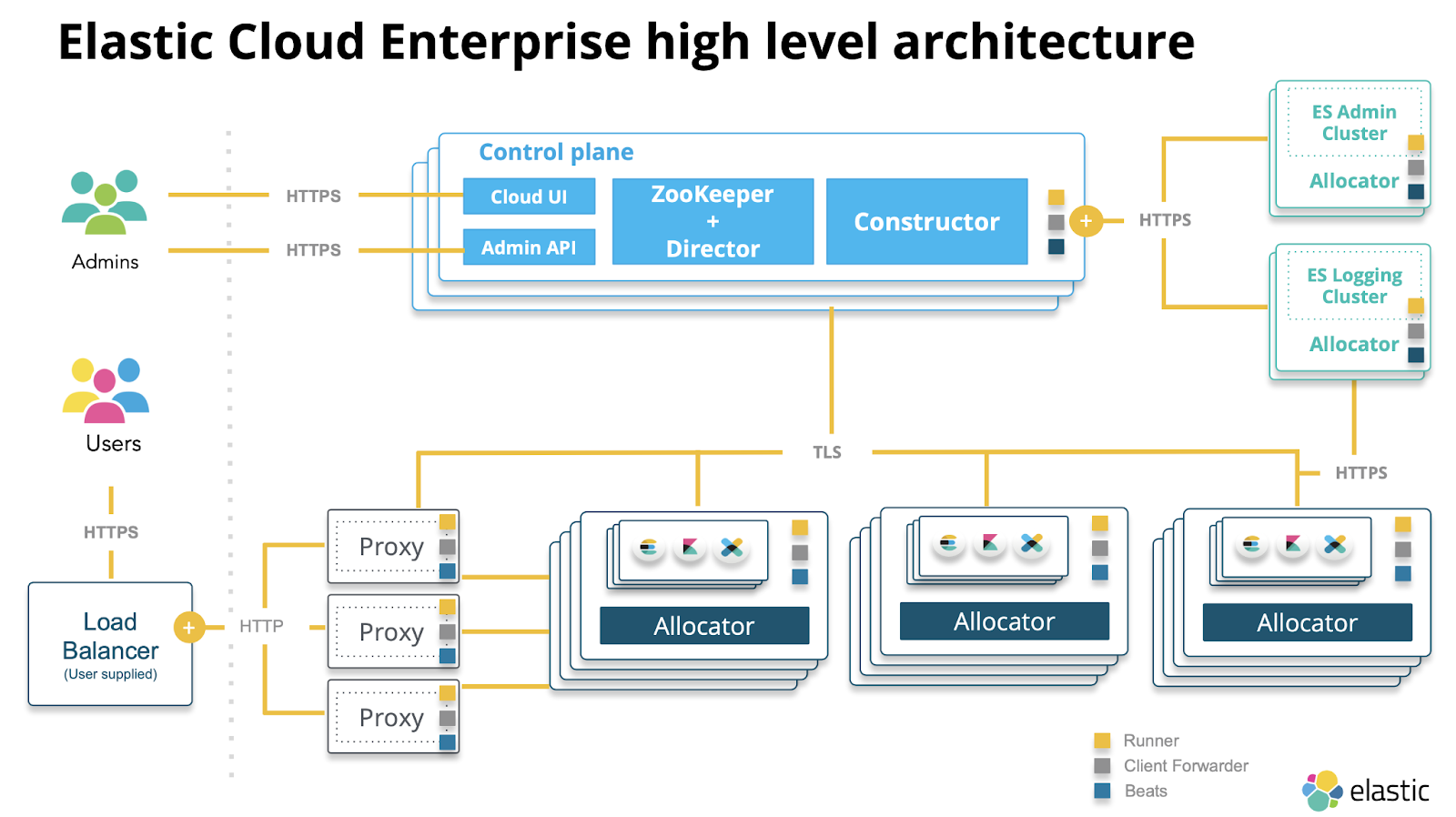
Use Cases:
- Real-time log and event data analysis for monitoring and troubleshooting
- Providing real-time data exploration and visualization for business intelligence
- Building real-time data pipelines and streaming analytics systems
Message Brokers
Dockerizing message brokers (Kafka and RabbitMQ) ensures reliable message delivery and cluster management via scalable messaging systems.
1. Kafka
Kafka is an open-source distributed streaming platform designed to handle real-time data feeds. It excels at managing high-throughput, low-latency data streams and is widely used for building real-time data pipelines and streaming applications.
Key Features:
- High throughput and low latency
- Horizontal scalability by adding more brokers to the cluster
- Data reliability through distributed storage and replication
- Persistent message storage for reliable data recovery
- Seamless integration with stream processing frameworks like Kafka Streams and Apache Flink
- Supports various messaging models, including publish-subscribe and message queues
Architecture:
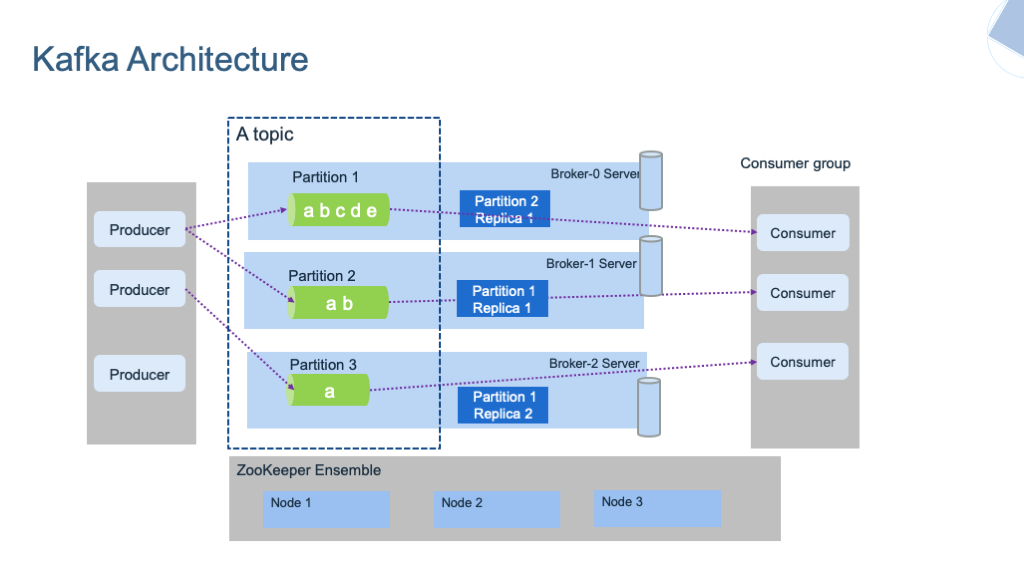
Use Cases:
- Processing and analysis of data in real-time for applications like fraud detection and customer analytics
- Working as a central hub to integrate data from various sources for ETL (Extract, Transform, Load) processes
- Capturing and logging changes in an application states
2. RabbitMQ
RabbitMQ is an open-source message broker software that facilitates communication between applications by sending messages between producers and consumers. Known for supporting various messaging protocols, it is lightweight and can be deployed easily both on-premises and in cloud infrastructures. Utilizing it as a Docker container simplifies configurations in the app and software development processes.
Key Features:
- Clustering and automatic failover capabilities for high availability
- Easy vertical and horizontal scaling
- Web-based management plugins for easy monitoring and maintenance
- High portability across different environments
- Easy integrations with other apps and services within a Docker ecosystem
Architecture:
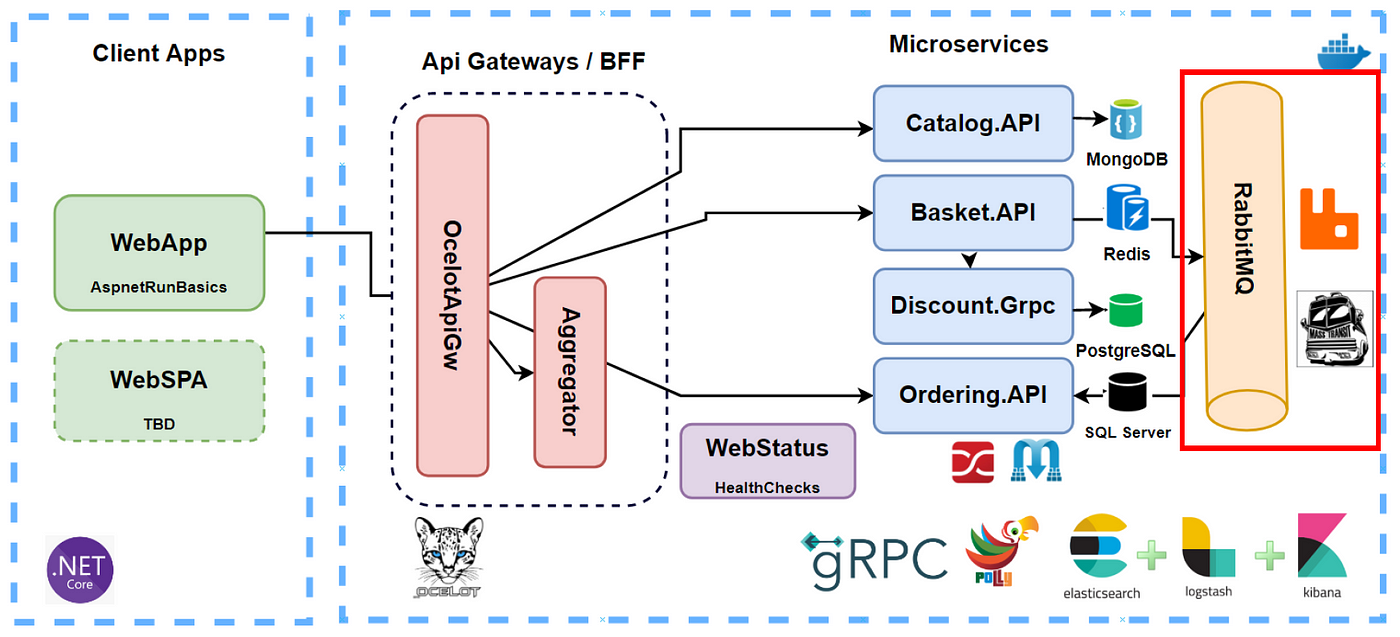
Use Cases:
- Asynchronous task queue management for web-based applications
- Inter-service communication between different microservices in a distributed architecture
- Enabling event-driven architectures by acting as a central hub for events
Development and CI/CD
Dockerized development and CI/CD tools and frameworks simplify the process by providing consistent build and test environments, running jobs in isolated containers, and enabling scalable CI/CD pipelines.
1. Node.js
Node.js is a popular JavaScript runtime built on Chrome’s V8 JavaScript engine. It is ideally used for efficient and scalable server-side applications. Dockerizing Node.js simplifies software development, ensures consistency across multiple environments, and enhances the deployment process.
Key Features:
- Consistent development environments to ensure that developers work in the same environment
- Security and operational independence by isolating different Node.js applications in separate containers
- Easy scaling of applications using orchestration tools
- Hassle-free transitions across different computing environments
- Efficient caching with Docker layers for faster builds
Architecture:
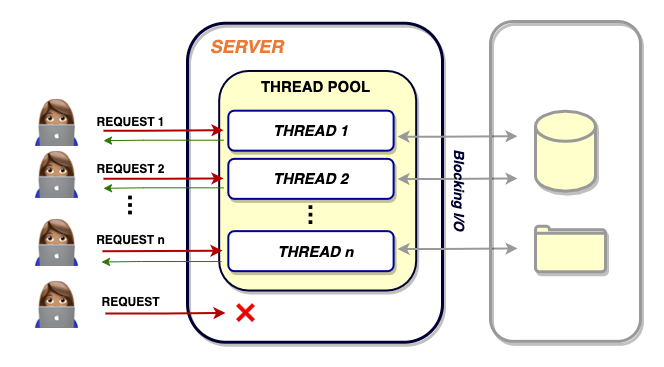
Use Cases:
- As a scalable and efficient server-side solution for web and mobile applications
- Ideal for real-time processing capabilities, such as chat applications or live data dashboards
- To manage communication and data processing from multiple IoT devices efficiently
2. Python
Python is a versatile programming language used in software development. Many prefer it for its simplicity and the vast array of libraries it offers. It is used for a variety of development tasks, from web applications to data science. Using Python in a Docker container makes the development process more consistent and efficient, as the runtime gets encapsulated along with specific versions and dependencies.
Key Features:
- Consistent environment for development, testing, and production
- Simplified dependency management
- Easy horizontal and vertical scaling
- Isolated runtime environments for unique Python applications
Architecture:
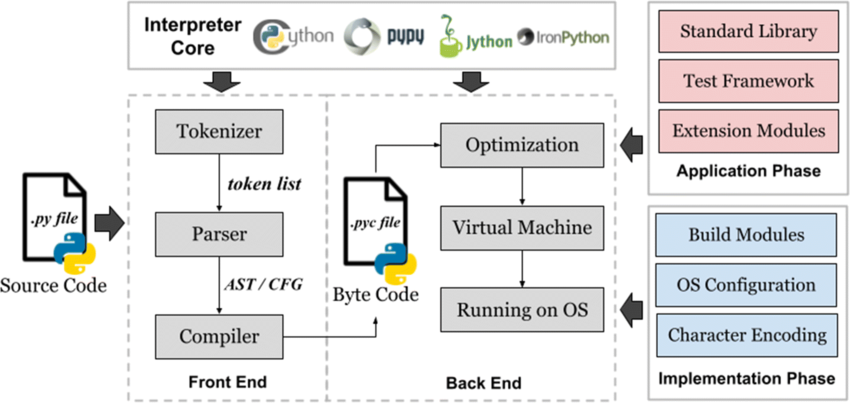
Use Cases:
- Developing and deploying web applications using Django and Flask
- Creating scripts for the automation of tasks and processes
- Building and deploying RESTful APIs
- Teaching Python in controlled environments
3. Jenkins
Jenkins is a powerful open-source automation server used primarily for continuous integration and continuous deployment (CI/CD) of software projects. It automates the building, testing, and deploying of software, making it easier for developers to integrate changes to the project and for users to obtain fresh builds. Running Jenkins in a Docker container enhances its setup, scalability, and maintainability, making it an ideal choice for modern DevOps workflows.
Key Features:
- Extensive plugin ecosystem with over a thousand plugins that integrate with virtually every tool
- Automated builds and tests upon code commits
- Real-time feedback on the status of software builds
- Easy scaling (up or down) by distributing builds across multiple machines
- Jenkins Pipeline (or declarative pipelines) for source control
Architecture:
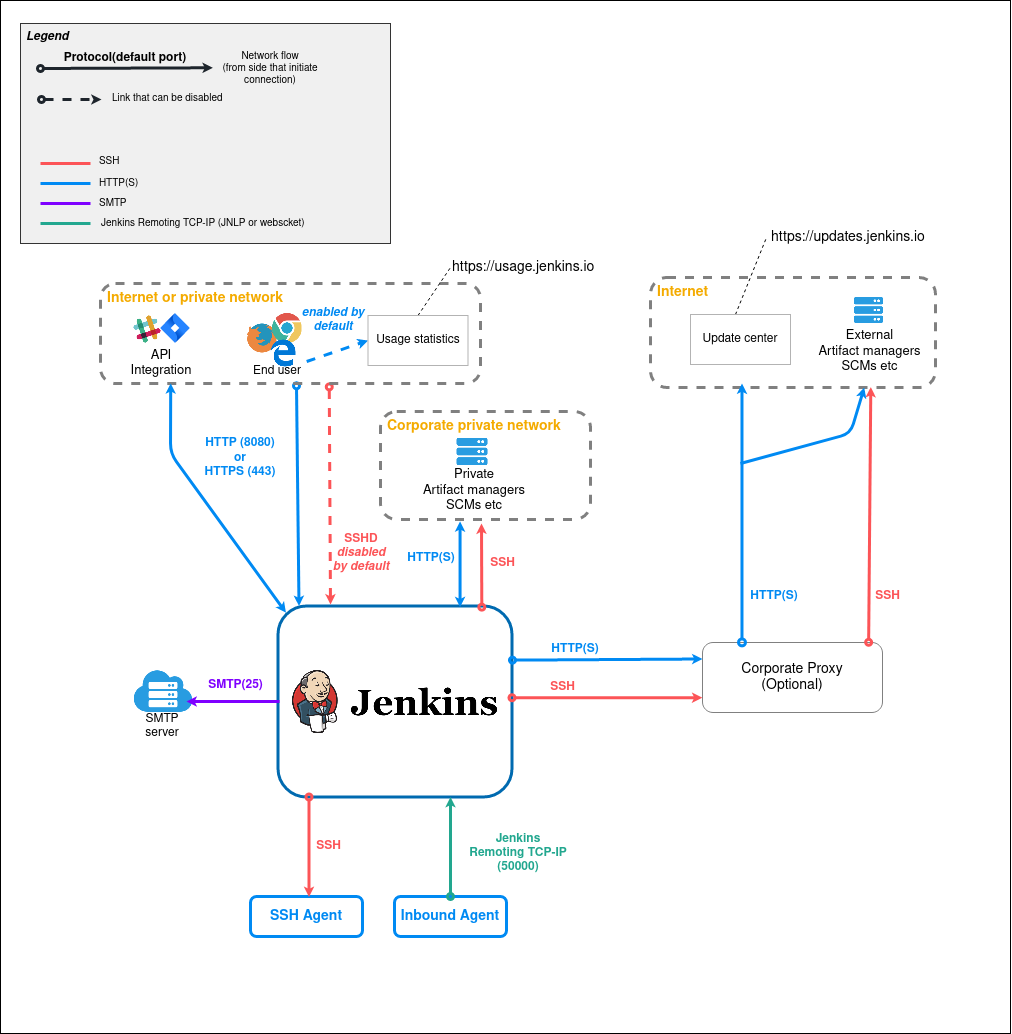
Use Cases:
- Monitor repositories in version control systems like Git
- Automated code quality checks with SonarQube or Checkstyle
- Apply Terraform scripts to manage and provision infrastructure resources in cloud environments like AWS or Azure
4. GitLab Runner
GitLab Runner is an open-source tool for running jobs and sending the results back to GitLab. It is a key component of the GitLab CI/CD pipeline that enables automated builds, tests, and deployments. Running GitLab Runner as a Docker container enhances its deployment, management, and scalability, making it a robust solution for continuous integration and delivery.
Key Features:
- Easy setup and maintenance
- Isolated jobs in different containers for secure builds
- Versatile environment support for various environments, including shell and custom executors
- Precise resource allocation for each runner
Architecture:
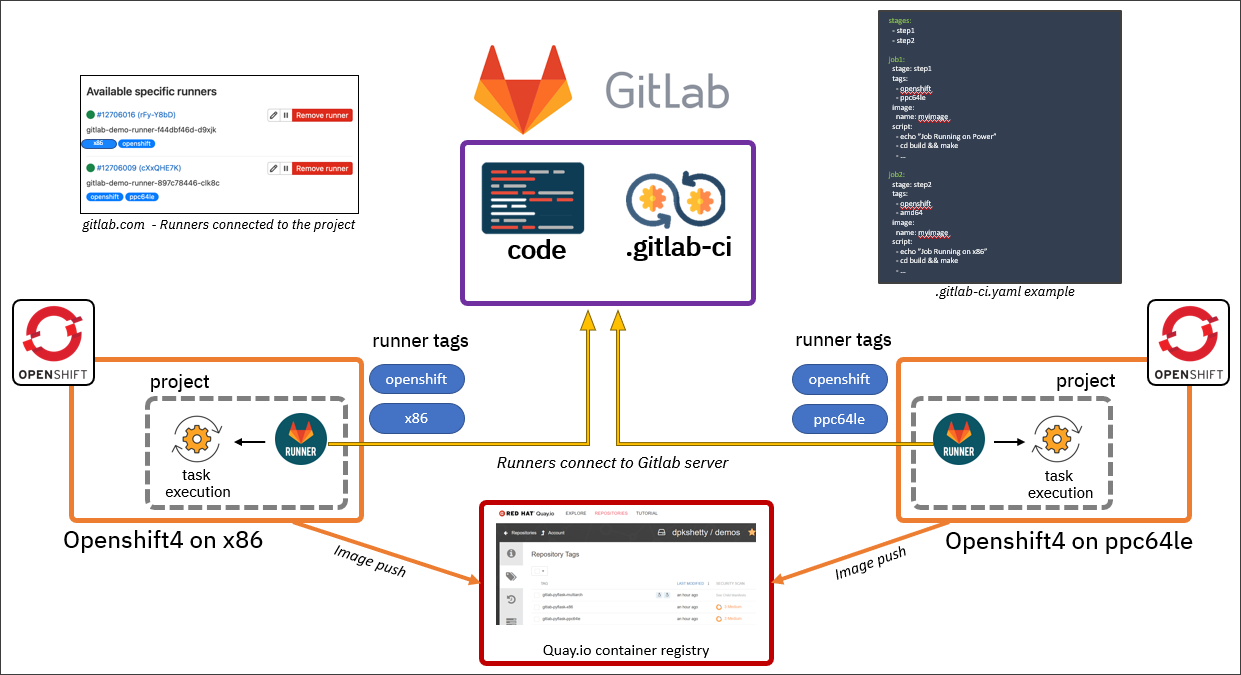
Use Cases:
- Automatically running unit tests, integration tests, and deploying applications to staging
- Managing cross-platform builds and application tests
- Executing Terraform scripts to manage cloud infrastructure resources
- Building Docker images from source code and pushing them to a container registry
- Performing automated security scans and compliance checks
Web Servers
Dockerizing web servers like Nginx and Apache HTTP Server makes the deployment process more flexible, secure, and scalable.
1.Nginx
Nginx is a high-performing, open-source server used for reverse and IMAP/POP3 proxies. It is designed with robust load-balancing capabilities, making it efficient for handling both static and dynamic content. By optimizing for higher speed and reduced waiting time, it offers scalability and agility to handle concurrent requests.
Key Features:
- High traffic handling with low resource consumption
- Traffic distribution across multiple servers
- SSL decryption from backend servers
- Static files/content serving for reduced loads
- Efficient caching for better response times
Architecture:
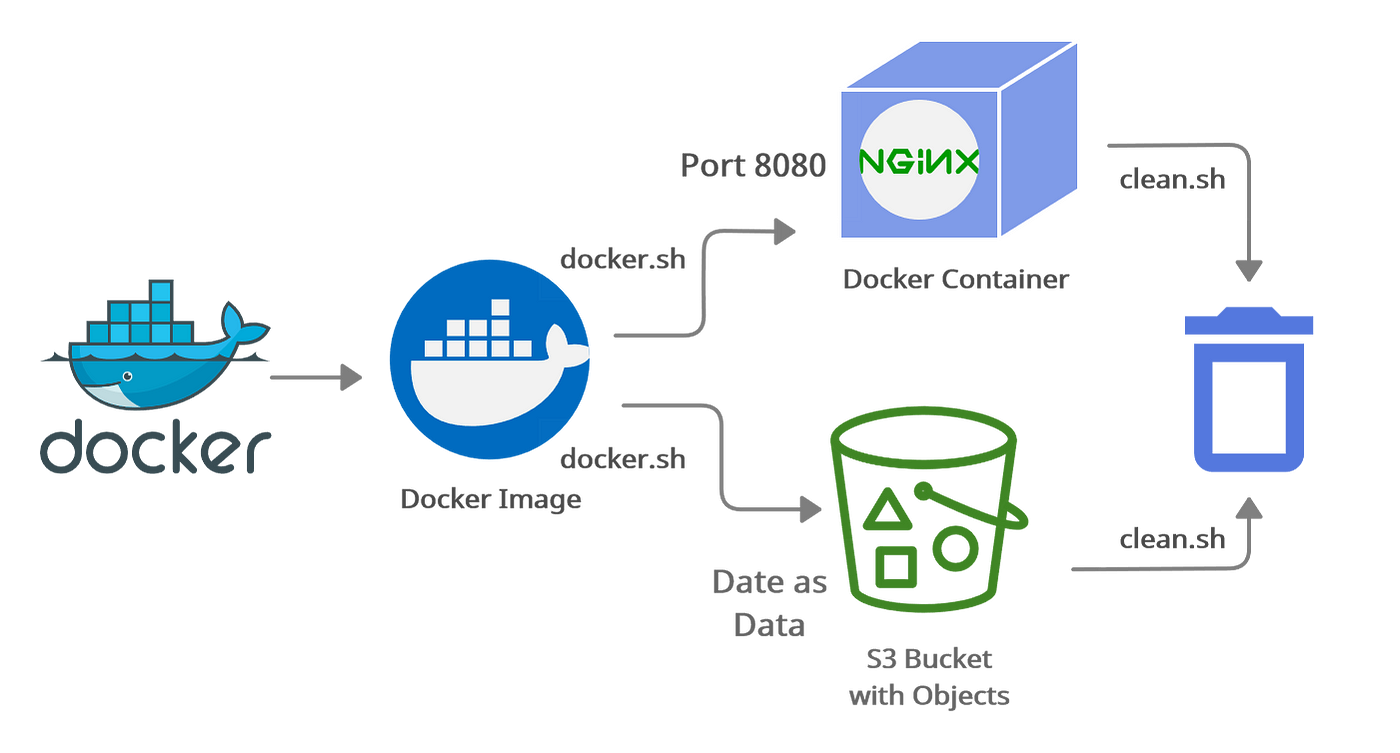
Use Cases:
- Hosting dynamic web-based applications
- Proxying WebSocket connections to backend servers
- Managing and routing API requests
- Distributing traffic between different versions of a web application for A/B testing
- Working as a Web Application Firewall
2. Apache HTTP Server
Apache HTTP Server is one of the most widely used web servers in software and web application development. Known for its flexibility, power, and extensive module support, it can serve static and dynamic content and is highly configurable.
Key Features:
- Range of modules for extended functionality, such as SSL, URL rewriting, and authentication
- Highly configurable with fine-grained controls
- Supports multiple websites on a single server using virtual hosts
- Robust security features, including access control and SSL/TLS
- Logging capabilities for monitoring server performance and diagnosing issues
Architecture:
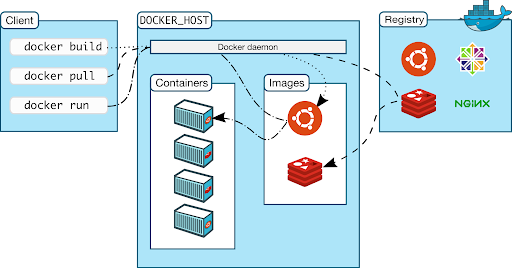
Use Cases:
- Hosting static websites, including HTML, CSS, JavaScript, and image files
- Configuring Apache to handle dynamic content generated by CGI scripts or PHP applications
- Serving as an API gateway to manage and route API requests to backend services, providing a unified entry point for API consumers
Wrapping up
Modern businesses are considering containerization in their software and application development processes for enhanced efficiency, consistency, and portability. Docker, a prominent, open-source containerization platform, is already leading this transition by offering easy installation and configuration. Since its inception, the Docker community has actively shared resources and knowledge through platforms like GitHub, Docker Hub, and other public forums. Even today, such a spirit continues to drive innovation and widespread adoption.
Looking ahead, the constructive integration of Docker with emerging technologies like AI (as seen by its first AI-powered product Docker AI) will further drive its growth, empowering developers with more context-aware automated coding and containerization. In the words of Scott Johnston, “Docker AI will help developers define and troubleshoot all aspects (web servers, language runtimes, databases, message queues, and many other technologies) of the app quickly and securely.”
